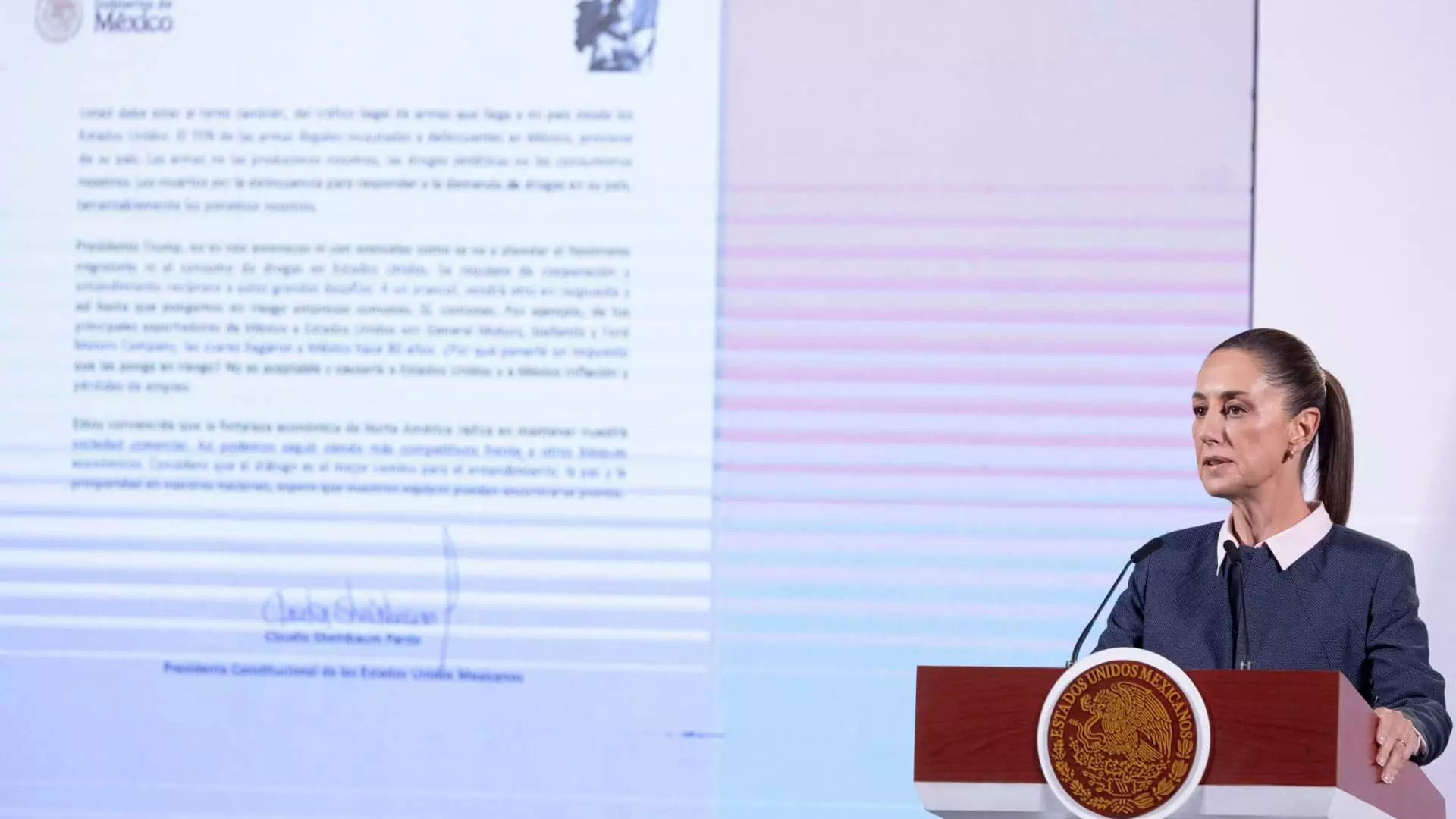The recent political climate has sparked considerable concern regarding trade relations between Mexico and the United States, particularly in light of proposed tariffs announced by President-elect Donald Trump. Claudia Sheinbaum, the Mexican President, has responded firmly to these threats, emphasizing the potential economic repercussions for both countries. This article delves into the implications of Trump’s tariff suggestions, exploring the prospective retaliatory actions by Mexico and their likely effects on the broader North American economy.
During a press conference, Sheinbaum made her position clear: Mexico would reciprocate if Trump implemented a blanket 25% tariff on imports from Mexico. This statement is significant, representing Mexico’s readiness to take protective measures against its primary trading partner. The Mexican government’s warnings suggest that such tariffs could potentially cost 400,000 jobs in the United States while simultaneously inflating prices for American consumers. It is a clear indication of the interconnectedness of the economies of these two neighboring countries.
Marcelo Ebrard, the Mexican Economy Minister, echoed this sentiment, arguing against a “war of retaliatory import taxes.” He framed the proposed tariffs as self-destructive, emphasizing that they would undermine U.S. jobs, stimulate economic downturn, and significantly burden companies that operate in both countries, particularly those in the automotive sector that export heavily to the U.S. This insight raises critical questions about the broader ramifications of protectionist trade policies and the potential risks of escalating trade wars.
The automotive industry, crucial to Mexico’s economy, stands to be disproportionately affected by the proposed tariffs. Ebrard specifically noted that vehicles manufactured in Mexico play a dominant role in the U.S. market, with a staggering 88% of pickup trucks sold in the U.S. being produced south of the border. The economic analysis indicates that Trump’s tariffs could inflate the price of these popular vehicles by as much as $3,000, a move that could drastically alter consumer behavior, especially in rural areas where support for Trump remains strong.
This scenario underscores the inherent risks facing car manufacturers like Ford, General Motors, and Stellantis, which rely heavily on integrated cross-border supply chains. Such tariffs could obliterate their profit margins, signaling potential fallout that would reverberate beyond just the automotive sector but through other connected industries that depend on the health of manufacturing and retail operations.
Amid increased tensions, Sheinbaum and Trump engaged in a telephone conversation where topics ranging from tariffs to migration were discussed. Trump’s arguments for imposing tariffs were rooted in the narrative of controlling drug flows and migration from Mexico. However, Sheinbaum’s response highlighted a different approach—one advocating for cooperative strategies rather than punitive measures. She has articulated a vision of building bridges rather than walls, which reflects a broader desire to maintain amicable relations between the two nations despite the looming threats of economic warfare.
The dialogue, described by both leaders as productive, raises awareness of the delicate nature of international relations and the need for negotiated solutions. Analysts suggest that Trump’s rhetoric around tariffs is more about leverage than genuine trade policy, which adds an additional layer of complexity to the negotiations ahead.
As economic analysts continue to assess the potential impact of these tariffs, there are growing concerns about the long-term health of U.S.-Mexico relations. Experts from the Institute of International Finance have cautioned that escalating tariffs could lead to increased protectionism, affecting not just trade alignment but also exchange rates and commodity pricing on a continental scale.
Moreover, the USMCA trade deal, which is up for review in 2026, may face scrutiny and necessitate substantial renegotiation rather than simply continuing in its current form. This looming period of potential economic instability raises apprehensions about lower economic growth rates, higher unemployment figures, and a spike in inflation within the United States. The stakes are high, demanding careful consideration and strategy from both economic leaders and policymakers in both nations.
The proposed tariffs by Trump signify a profound shift in trade dynamics, with possible wide-ranging impacts on the North American economy. Mexico’s determined response, aimed at fostering collaboration over conflict, highlights the importance of diplomatic dialogue in mitigating trade tensions. As both nations navigate these challenging waters, their decisions will undoubtedly shape the economic landscape for years to come, warranting close scrutiny from stakeholders across the continent. The lessons learned from this episode could serve as a blueprint for addressing future trade conflicts, ultimately advocating for policies that emphasize partnership over division in an increasingly interconnected world.


Leave a Reply